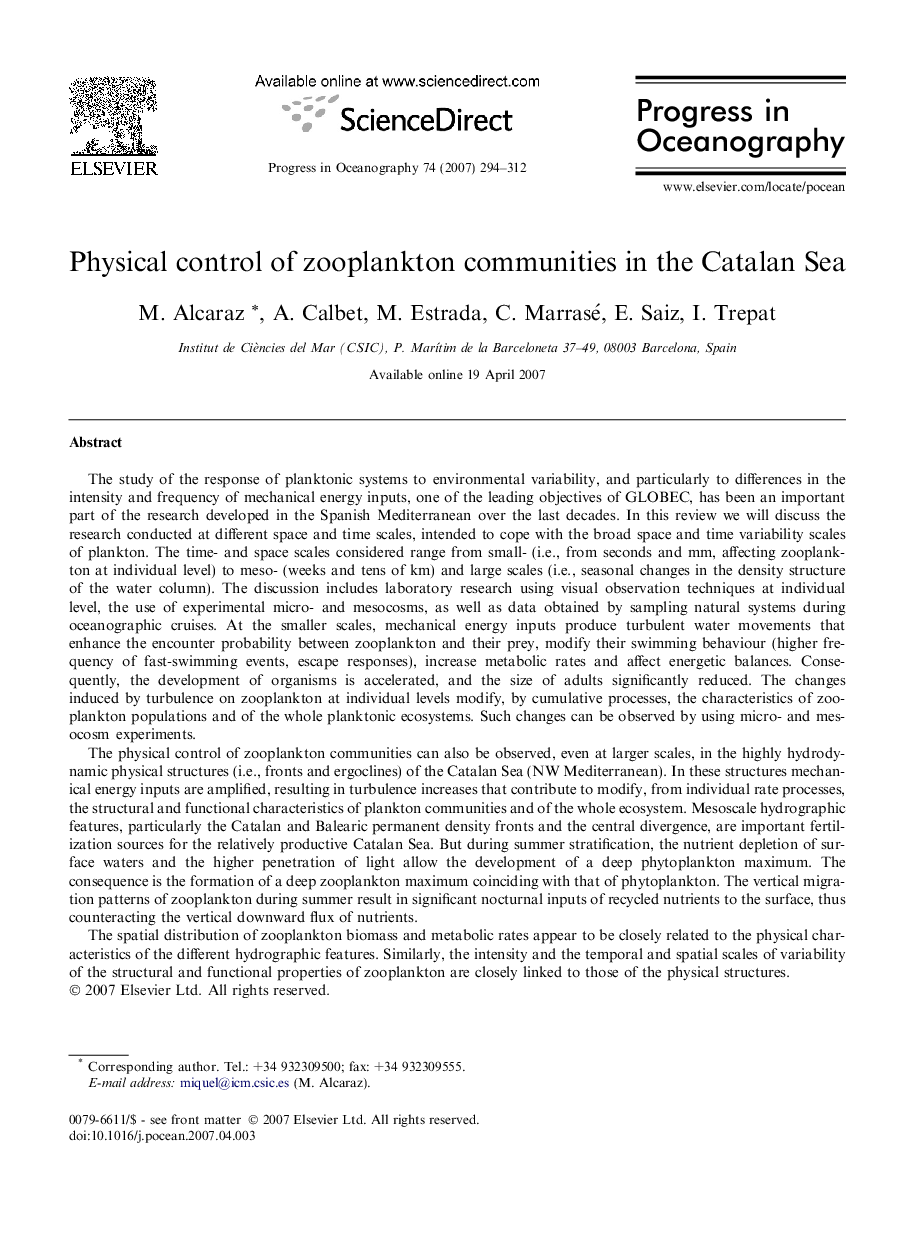| کد مقاله | کد نشریه | سال انتشار | مقاله انگلیسی | نسخه تمام متن |
|---|---|---|---|---|
| 4553910 | 1627971 | 2007 | 19 صفحه PDF | دانلود رایگان |

The study of the response of planktonic systems to environmental variability, and particularly to differences in the intensity and frequency of mechanical energy inputs, one of the leading objectives of GLOBEC, has been an important part of the research developed in the Spanish Mediterranean over the last decades. In this review we will discuss the research conducted at different space and time scales, intended to cope with the broad space and time variability scales of plankton. The time- and space scales considered range from small- (i.e., from seconds and mm, affecting zooplankton at individual level) to meso- (weeks and tens of km) and large scales (i.e., seasonal changes in the density structure of the water column). The discussion includes laboratory research using visual observation techniques at individual level, the use of experimental micro- and mesocosms, as well as data obtained by sampling natural systems during oceanographic cruises. At the smaller scales, mechanical energy inputs produce turbulent water movements that enhance the encounter probability between zooplankton and their prey, modify their swimming behaviour (higher frequency of fast-swimming events, escape responses), increase metabolic rates and affect energetic balances. Consequently, the development of organisms is accelerated, and the size of adults significantly reduced. The changes induced by turbulence on zooplankton at individual levels modify, by cumulative processes, the characteristics of zooplankton populations and of the whole planktonic ecosystems. Such changes can be observed by using micro- and mesocosm experiments.The physical control of zooplankton communities can also be observed, even at larger scales, in the highly hydrodynamic physical structures (i.e., fronts and ergoclines) of the Catalan Sea (NW Mediterranean). In these structures mechanical energy inputs are amplified, resulting in turbulence increases that contribute to modify, from individual rate processes, the structural and functional characteristics of plankton communities and of the whole ecosystem. Mesoscale hydrographic features, particularly the Catalan and Balearic permanent density fronts and the central divergence, are important fertilization sources for the relatively productive Catalan Sea. But during summer stratification, the nutrient depletion of surface waters and the higher penetration of light allow the development of a deep phytoplankton maximum. The consequence is the formation of a deep zooplankton maximum coinciding with that of phytoplankton. The vertical migration patterns of zooplankton during summer result in significant nocturnal inputs of recycled nutrients to the surface, thus counteracting the vertical downward flux of nutrients.The spatial distribution of zooplankton biomass and metabolic rates appear to be closely related to the physical characteristics of the different hydrographic features. Similarly, the intensity and the temporal and spatial scales of variability of the structural and functional properties of zooplankton are closely linked to those of the physical structures.
Journal: Progress in Oceanography - Volume 74, Issues 2–3, August–September 2007, Pages 294–312